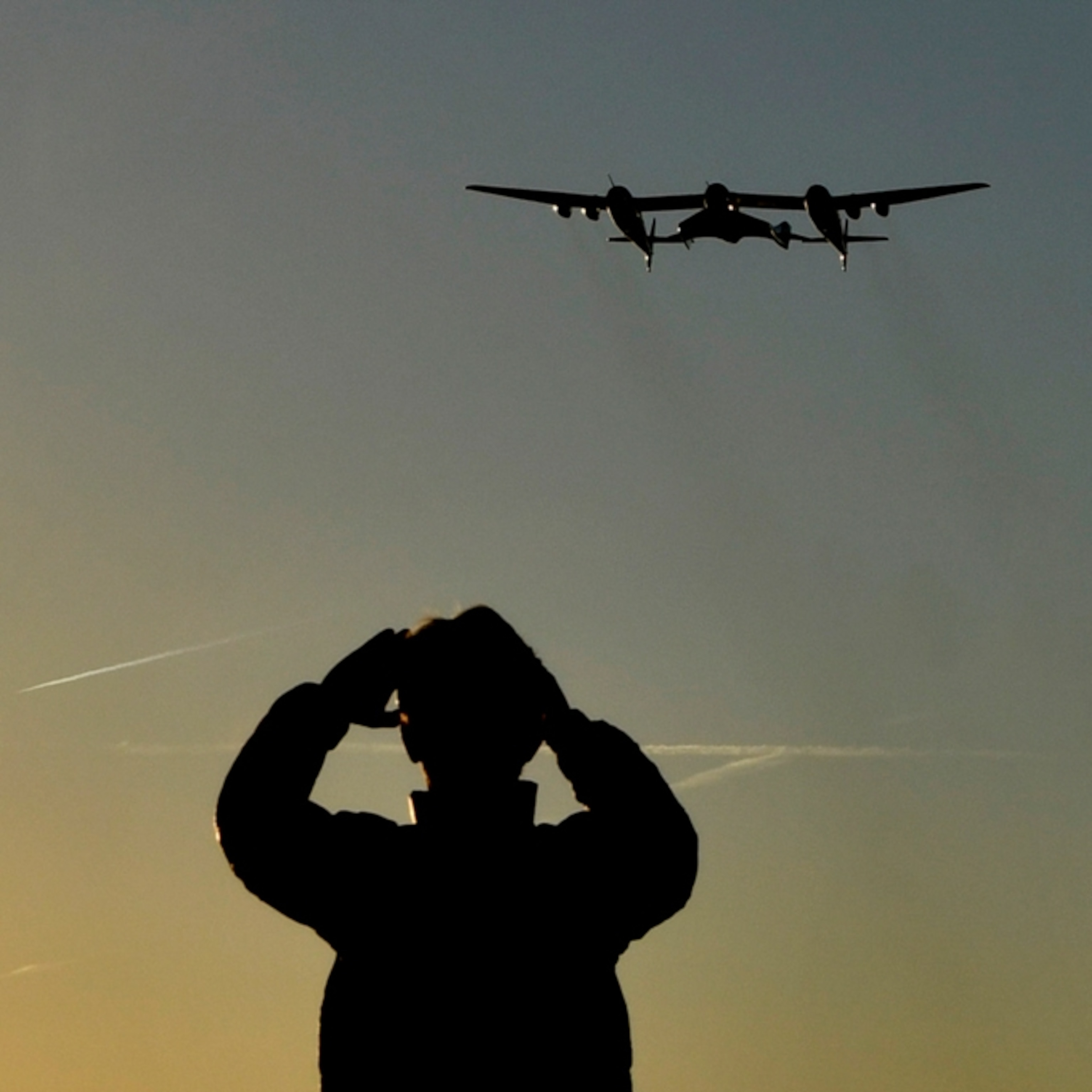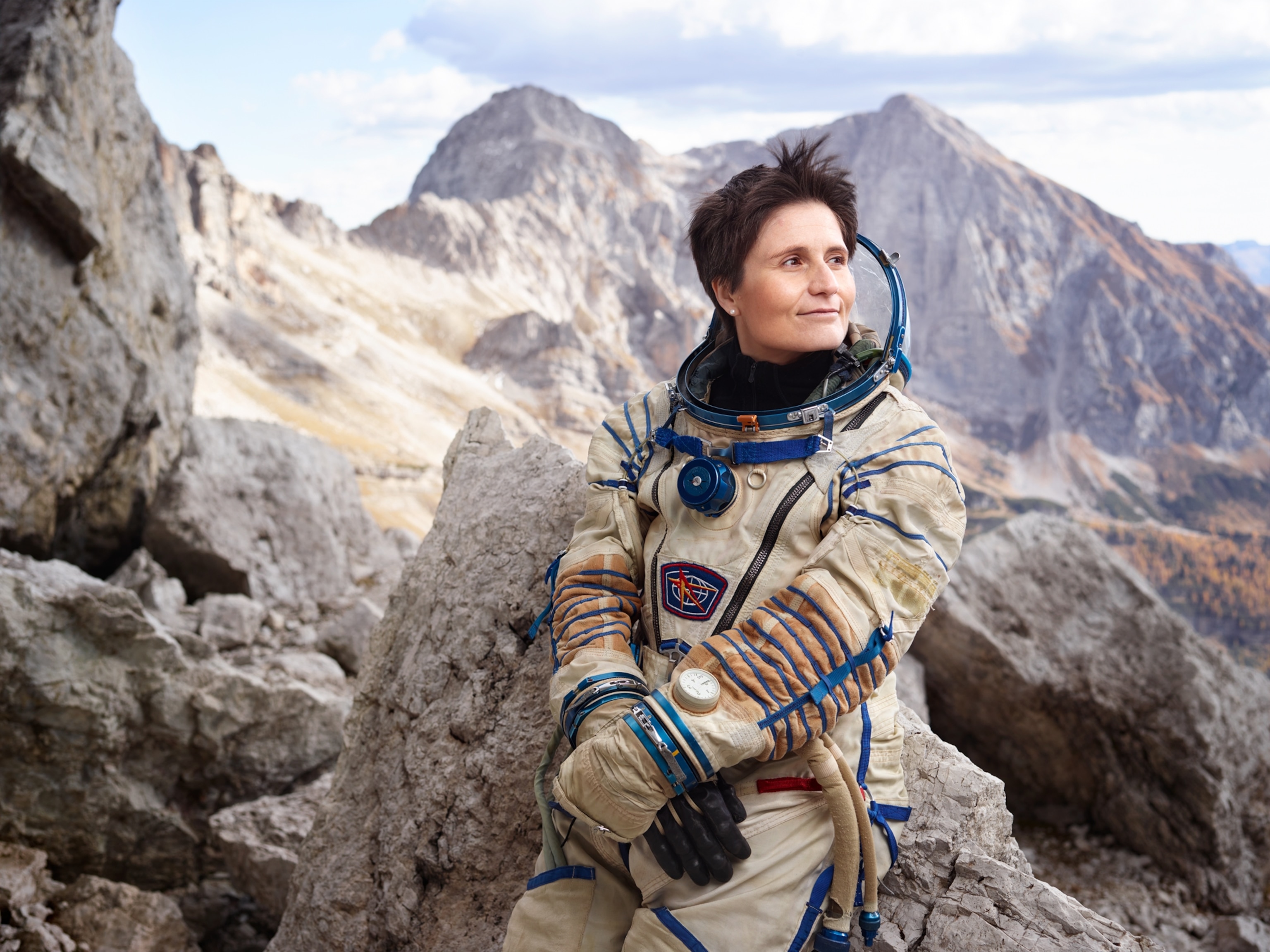On Halloween in the year 2000, a Russian Soyuz rocket launched from the Baikonur Cosmodrome in Kazakhstan and flew into the history books, carrying one U.S. astronaut and two Russian cosmonauts to the nascent International Space Station (ISS).
The crew arrived two days later, and the space station has been continuously occupied by humans ever since, a 20-year streak of living and working in low-Earth orbit.
“There’s kids now who are in college who, for their entire lives, we’ve been living off the planet,” says Kenny Todd, NASA’s deputy program manager for the ISS. “When I was a kid, that was all stuff that was just dreams.”
The orbiting laboratory is among the most expensive and technologically complex objects ever built: a $150-billion pressurized habitat as long as a football field, whizzing 254 miles above Earth’s surface at 17,000 miles an hour. Over the decades, 241 women and men from around the world have temporarily called the space station home, some for nearly a full year at a time.

“It’s pretty crazy—I’m surprised we haven’t, like, really seriously hurt anybody,” says retired NASA astronaut Scott Kelly, who spent nearly a year on one ISS stay. “It’s really a testament to the seriousness [with which] people on the ground take this job, the attention to detail.”
Upward of a hundred thousand people have worked together to design, build, launch, and operate the sprawling station, says David Nixon, who worked with NASA on ISS designs in the mid-1980s. “When you compare the station to the procession of great structures and buildings built by humanity since the dawn of civilization, it’s up there with the Pyramids, the Acropolis—all the great structures and edifices,” he says.
A global triumph
Like Earth’s most enduring structures, the ISS was decades in the making. Born out of the U.S.’s concept for “Space Station Freedom” in 1984, the project gradually evolved into a 15-nation pact between the U.S., Canada, Japan, Russia, and the eleven member states of the European Space Agency. The first pieces of the ISS started arriving in orbit in 1998, and Expedition 1 crew members climbed aboard the newborn station on November 2, 2000. The station now hosts Expedition 64.
Along the way, the program has faced serious challenges. The space shuttle disasters of 1986 and 2003 not only resulted in 14 deaths and the losses of Challenger and Columbia; they also rattled the program and slowed the station’s construction. In 2007, a 2.5-foot tear in one of the station’s solar arrays required the crew to improvise a repair and conduct a high-stakes spacewalk—floating over the panels attached to a tether as electricity coursed through the array. Crews have also had to contend with air leaks, damaged coolant pumps, elaborate repairs of scientific equipment, and failed resupply missions.

To keep the station running and its inhabitants alive, the crewmembers and global support teams must engage in a technical collaboration that Todd likens to “a mini-United Nations.”
“Our astronauts, our cosmonauts, they’re on the pointy end of the spear living in these little cans that we’ve put together on-orbit,” he says. “It’s amazing how bringing all these cultures together [has] been quite a learning experience.”
Even the daily routines present challenges, in part because of the ISS’s unique environment. Sunlight and shadow heat and cool the station every time it circles Earth, about every 90 minutes, causing the metallic structures to flex and pop. Some astronauts sleep with earplugs in for peace of mind.
The environment is no easier on the human body. Fluids normally drawn toward the feet by gravity linger in the head, causing discomfort and possibly contributing to astronauts’ impaired eyesight once they return to terra firma. CO2 levels on the ISS are often 10 times higher than on Earth, enough to give crew members headaches. And basic activities such as using the bathroom—which humans evolved to do in gravity—become complex chores.
“It’s not like going on vacation,” says Kelly, who spent 499 days aboard the ISS across two expeditions, including a 340-day “year in space” with cosmonaut Mikhail Kornienko in 2015 and 2016. “There’s a lot of uncomfortableness.”
Despite the physical discomfort, the experience of living aboard the space station changes people in another way. From his perch above Earth, Kelly took in the electric blues of the Bahamas and the vastness of the Sahara—and Earth’s eerily thin atmosphere, which reminded him of a contact lens clinging to a great eyeball.
“You just have this impression that we’re all citizens of not a particular country, but of the planet,” he says. “We’re all in this thing called humanity together.”


Science in space
In addition to keeping their orbital home in order, ISS crew members have established a space laboratory. Setting up the station for science hasn’t been easy, as even the most basic lab equipment had to be tested and often redesigned to work in microgravity. But to date, nearly 3,000 experiments have been conducted in the station’s unique microgravity environment. (Because the ISS orbits Earth, it’s essentially in a constant state of free fall, along with everyone on board. This creates a steady sense of weightlessness inside the station, as if Earth’s gravity were dialed down by more than 99.999 percent.)
Research ranges from sequencing DNA in space to studying the high-energy particles from distant cosmic phenomena. But one of the most fruitful areas of ISS research has been on the crew members themselves.
For Colorado State University radiation biologist Susan Bailey, the ISS has provided invaluable data on how space affects astronauts’ health. The single biggest leap: NASA’s Twins Study, which examined Scott Kelly and his identical-twin brother, fellow astronaut Mark Kelly, as Scott spent most of a year in space.
Bailey examined the brothers’ blood samples to study their chromosomes, and especially their telomeres, which are protective DNA sequences at the ends of chromosomes that act a bit like the caps on the ends of shoelaces. Studying the Kelly brothers’ DNA has let Bailey and her colleagues better understand how the human body responds to microgravity and space radiation. Early results show a wide range of genetic changes in response to spaceflight, including some signs of telomere shortening, which is associated with aging and heart disease. (Read more about the first round of results from the Twins study.)

“If indeed aging and disease risk is accelerated with spaceflight, what can we do about it?” Bailey asks. “As we figure that out, it’ll benefit those of us on Earth as well.”
The space station’s future
With more than 120,000 orbits and 3.3 billion miles traveled above Earth’s surface, the ISS is still going strong—and it’s more of a global effort than ever. Astronauts and cosmonauts from 19 countries have visited the station. As NASA tries to boost commercial use of the station, and possibly start bringing tourists up to visit, more people from more backgrounds are likely to fly in space, from commercial researchers to movie stars.
“As the station becomes more routine, you get people going up there who are definitely not ‘The Right Stuff’—who are not former test pilots or military pilots, but who come from a scientific or engineering background,” Nixon says. “That’s the way it should be.”
But as access to low-Earth orbit broadens, the ISS and its successors should be made more livable and easy-to-operate, Nixon says. His dream future station would be less noisy, provide crews with more creature comforts, and have more spacious accommodations including a proper shower.
“It’d be wonderful if somebody would deliver a module to the station that was completely lined in upholstery and cushions, and you could just bounce around inside,” Nixon says. “Work off the stresses of the day, right? Why not?”
Whether the ISS itself will be around to see the bounce-house days of space exploration is unclear. The station is currently slated to run until at least 2024, and much of its hardware is certified to operate safely until at least 2028, if not longer for its younger components.

But as NASA tries to lead a growing international coalition to the moon—with only some of the ISS partner countries, for now—the future of Earth’s orbiting laboratory remains uncertain. Will the ISS be disassembled and scavenged in orbit to construct a future space station? Will it be turned over to private companies as nations venture farther into space? Will the whole structure go out in a final blaze of glory, steered into a Pacific crash landing like the Russian space station Mir?
Regardless of the ISS’s eventual fate, Kelly thinks that its legacy—and spirit of exploration—must endure.
“We should dedicate ourselves to never having every human on Earth again,” he says. “We’ve got this 20-year streak going, and I’d hate to see it broken.”
Related Topics
You May Also Like
Go Further
Animals
- Octopuses have a lot of secrets. Can you guess 8 of them?
- Animals
- Feature
Octopuses have a lot of secrets. Can you guess 8 of them? - This biologist and her rescue dog help protect bears in the AndesThis biologist and her rescue dog help protect bears in the Andes
- An octopus invited this writer into her tank—and her secret worldAn octopus invited this writer into her tank—and her secret world
- Peace-loving bonobos are more aggressive than we thoughtPeace-loving bonobos are more aggressive than we thought
Environment
- This ancient society tried to stop El Niño—with child sacrificeThis ancient society tried to stop El Niño—with child sacrifice
- U.S. plans to clean its drinking water. What does that mean?U.S. plans to clean its drinking water. What does that mean?
- Food systems: supporting the triangle of food security, Video Story
- Paid Content
Food systems: supporting the triangle of food security - Will we ever solve the mystery of the Mima mounds?Will we ever solve the mystery of the Mima mounds?
- Are synthetic diamonds really better for the planet?Are synthetic diamonds really better for the planet?
- This year's cherry blossom peak bloom was a warning signThis year's cherry blossom peak bloom was a warning sign
History & Culture
- Strange clues in a Maya temple reveal a fiery political dramaStrange clues in a Maya temple reveal a fiery political drama
- How technology is revealing secrets in these ancient scrollsHow technology is revealing secrets in these ancient scrolls
- Pilgrimages aren’t just spiritual anymore. They’re a workout.Pilgrimages aren’t just spiritual anymore. They’re a workout.
- This ancient society tried to stop El Niño—with child sacrificeThis ancient society tried to stop El Niño—with child sacrifice
- This ancient cure was just revived in a lab. Does it work?This ancient cure was just revived in a lab. Does it work?
- See how ancient Indigenous artists left their markSee how ancient Indigenous artists left their mark
Science
- Jupiter’s volcanic moon Io has been erupting for billions of yearsJupiter’s volcanic moon Io has been erupting for billions of years
- This 80-foot-long sea monster was the killer whale of its timeThis 80-foot-long sea monster was the killer whale of its time
- Every 80 years, this star appears in the sky—and it’s almost timeEvery 80 years, this star appears in the sky—and it’s almost time
- How do you create your own ‘Blue Zone’? Here are 6 tipsHow do you create your own ‘Blue Zone’? Here are 6 tips
- Why outdoor adventure is important for women as they ageWhy outdoor adventure is important for women as they age
Travel
- This royal city lies in the shadow of Kuala LumpurThis royal city lies in the shadow of Kuala Lumpur
- This author tells the story of crypto-trading Mongolian nomadsThis author tells the story of crypto-trading Mongolian nomads
- Slow-roasted meats and fluffy dumplings in the Czech capitalSlow-roasted meats and fluffy dumplings in the Czech capital








